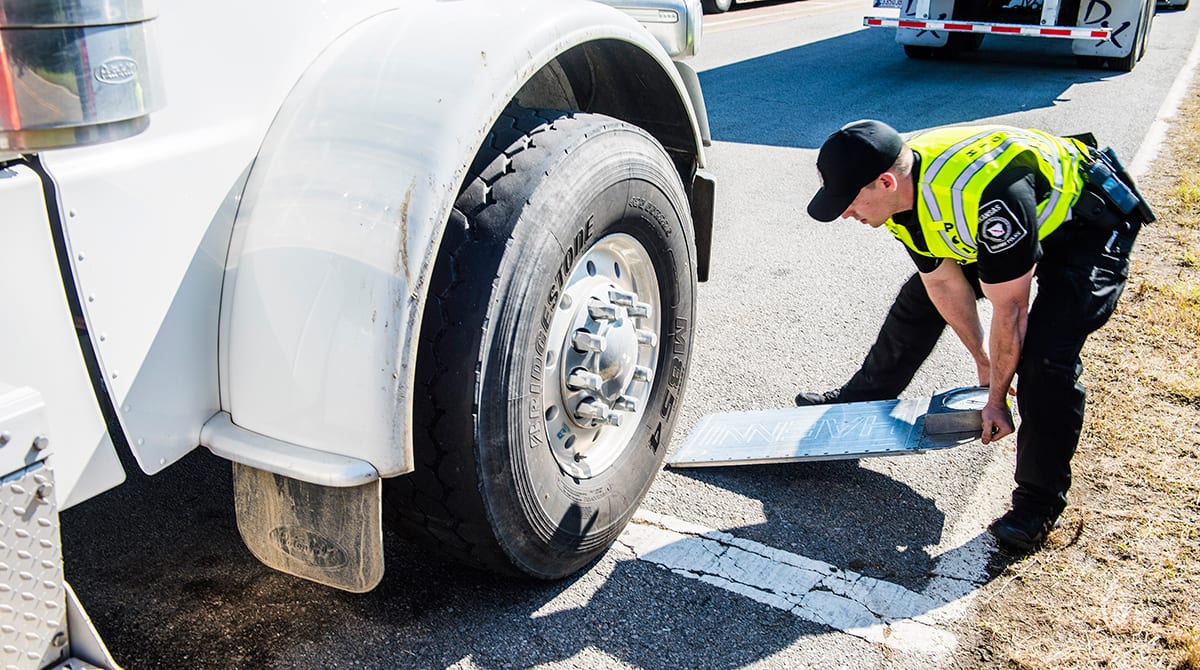Are You Ready for the 2025 International Roadcheck?
As the countdown to the International Roadcheck begins, commercial motor vehicle operators are reminded of the critical importance of regulatory compliance and safety. Scheduled from May 13 to 15, this annual initiative, organized by the Commercial Vehicle Safety Alliance (CVSA), will see law enforcement officers meticulously inspecting vehicles across Canada, Mexico, and the United States. This year, the spotlight is on tires and the integrity of drivers' records of duty status, making it essential for motor carriers and their drivers to be well-prepared. In this post, we will explore what to expect during the Roadcheck, the key areas of focus for inspectors, and best practices to ensure a successful outcome. Whether you’re a seasoned professional or new to the industry, understanding the nuances of roadside inspections can significantly enhance your compliance efforts and promote safer roadways for everyone.
In this issue:
- Question of the Week.
- Best Practice Guidelines for Roadside Inspections.
- Registration is open online for the 2025 Idealease/NPTC Spring Safety Seminar!
Read, share, and/or print this week's Safety Bulletin.
Check out past Idealease Safety Bulletins.
The International Roadcheck, organized by the Commercial Vehicle Safety Alliance (CVSA), is set for next week from May 13 to 15. This initiative involves a comprehensive inspection and enforcement of regulatory compliance for commercial motor vehicles, taking place over three days across Canada, Mexico, and the United States.

During this event, CVSA-certified law enforcement officers will conduct inspections at weigh stations, temporary sites, and through mobile patrols to ensure adherence to federal, state, provincial, or territorial regulations. Data gathered during the 72-hour International Roadcheck will be compiled, with results expected to be released this summer.
Each year, the International Roadcheck highlights specific categories of violations. For 2025, the focus will be on tires and false records of duty status.
During the tire inspection, inspectors will look for:
- Low tread depth
- Audible air leaks
- Flat tires
- Exposed belt material or casing ply in the tread or sidewall
- Tread or sidewall separation
- Bulges in the sidewall
- Improper repairs, such as rubber-coated plugs in the sidewall
- Items lodged between dual tires
While checking a driver’s records of duty status (RODS) for hours-of-service compliance, inspectors will also look for:
- Electronic logging device (ELD) tampering, including driving while not logged in, disconnected devices, or improper edits
- Ghost drivers (claiming a co-driver when none is present)
- Improper use of personal conveyance special driving category
- Misuse of other exceptions, such as adverse driving conditions
- Recording off-duty time while performing work for a motor carrier or non-motor carrier
Inspectors will carry out the standard North American Level I Inspection over the course of three days. This comprehensive 37-step process involves a detailed assessment of vehicle components as well as an evaluation of driver documentation and compliance with requirements.
Question of the Week
Question: My driver has gone through a roadside inspection. How long do I have to keep this documentation on file?
Answer: Motor carriers are required to retain copies of all roadside inspections for a period of 12 months. Drivers must submit the inspection report to the motor carrier within 24 hours. If a driver is not returning to the terminal, the report should be mailed in instead.
In cases where the inspection uncovers any violations, those issues need to be corrected or repaired. The inspection form must then be signed and certified to verify that the repairs were completed. This signed form must be sent back to the state where the inspection took place within 15 days.
Best Practice Guidelines for Roadside Inspections:

- Train drivers on how to perform thorough, high-quality pre-trip inspections to reduce the risk of violations.
- Review your CSA score monthly at www.ai.fmcsa.dot.gov by entering your DOT number or company name.
- Review the vehicle and driver BASICs, and cross-reference the inspections you have on file with those submitted by your drivers. Follow up with any drivers who have not turned in inspection reports.
- Use the “Carrier History” tab in the Tools/Resources section on your CSA home page to track whether your number of inspections is increasing or decreasing.
- Review inspection reports and any violations with your maintenance provider to identify and correct recurring issues.
- Keep copies of all inspection reports in both tractor and trailer files, along with any related repair orders if violations occurred.
- Cross-reference roadside inspection details—such as date, time, and location—with drivers’ hours-of-service documentation to identify possible falsification violations.
- Train drivers on how to properly handle a roadside inspection and how to conduct themselves professionally during the process.
- Keep vehicles clean and well-maintained to avoid being targeted for inspections.
- Remind drivers that moving violations often trigger inspections.
- Consider implementing a driver incentive program for successfully passing roadside inspections.
What documentation is required to be kept in vehicles leased or rented from Idealease to show they are not owned by the carrier?
Answer: If the vehicle is subject to Federal Motor Carrier Safety Administration (FMCSA) regulations—meaning it has a Gross Vehicle Weight Rating (GVWR) over 10,000 lbs—then specific documentation is required to be kept in the vehicle for the duration of the lease or rental period.
- Leased vehicles must comply with FMCSA regulation CFR 376.11(c), which states that a copy of the lease agreement or a certified statement of the lease containing the required information must be kept in the vehicle throughout the lease term.
- Rented vehicles must comply with FMCSA regulation CFR 390.21(e)(2)(iv), which requires a copy of the rental agreement to be carried in the vehicle for the duration of the rental period.
This documentation ensures the vehicle is properly identified as leased or rented and is operating in compliance with federal regulations.
Registration is now open online for the 2025 Idealease/NPTC Spring Safety Seminars!
Idealease and the National Private Truck Council NPTC will again be hosting safety seminars in the spring and fall of 2025. The one-day seminar this year will focus on basic safety and compliance, regulation changes and CSA. The seminars and will be provided to all Idealease customers, potential customers and NPTC members at no charge. The seminar provides important information applicable for both the novice and experienced transportation professionals.
Spring Seminars 2025
- 5/13/2025 – Columbia, SC
- 5/15/2025 – Tampa, FL
To register for an upcoming spring seminar in 2025, click on the following link:
Safety Seminar Registration
Note: Fall seminars will be announced in a later bulletin.
*The Idealease Safety Bulletin is provided for Idealease locations and their customers and is not to be construed as a complete or exhaustive source of compliance or safety information. The Idealease Safety Bulletin is advisory in nature and does not warrant, guarantee, or otherwise certify compliance with laws, regulations, requirements, or guidelines of any local, state, or Federal agency and/or governing body, or industry standards.
